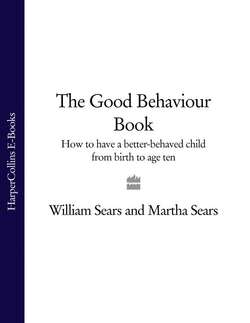Читать книгу The Good Behaviour Book: How to have a better-behaved child from birth to age ten - Martha Sears - Страница 70
the importance of saying no
ОглавлениеIt’s necessary for a parent to say no to a child so the child can later say no to herself. All children – and some adults – have difficulty delaying gratification. “I want it now” is a driving desire, especially in toddlers. Learning to accept no from someone else is a prelude to saying no to oneself. What gets children (and adults) into trouble is a knee-jerk, impulsive reaction to a want – an immediate yes – without taking time to run it through their internal sensor and consider the necessity of saying no to themselves.
Strike a balance. Too many “nos” and too many “yeses” cripple a child’s self-discipline. It’s important to achieve the right blend of “yeses” and “nos” in a child’s environment. If you rarely say no to your child, the few times that you do he’ll disintegrate because he is not used to being frustrated. If his whole day is full of “nos”, the child believes the world is a negative place to be and will grow up a negative person. The real world will always be full of “yeses” and “nos”. In many homes, children soon learn who is the “yes” parent and who is more likely to say “no”. Even the Ten Commandments have dos and don’ts. As the child gradually learns this lesson of life, she’s on her way to having a healthy, balanced personality.
“Nos” grow too. The art of saying “no” develops along with your baby. During the first year, a baby’s needs and wants are the same, so that you are mainly a “yes” parent. During the second year, baby’s wants are not always safe or healthy, so you become a “yes” and “no” parent. From nine to fourteen months, no-saying is straightforward. We call them “low-energy nos”. Between fourteen and eighteen months, as babies click into overdrive, they get easily frustrated and are likely to protest being steered in a direction other than the one they want to go. This is when you will need both high-energy “nos” and very creative alternatives, such as the distraction and substitution approach, which is intended to minimize wear and tear on you and your child. By eighteen months, no-saying can begin to be more matter-of-fact. Parents can begin to convey an attitude of “that’s life, and I’m confident you can deal with it”. By two years of age toddlers become infatuated with saying no themselves. (See “Defiance”.)
